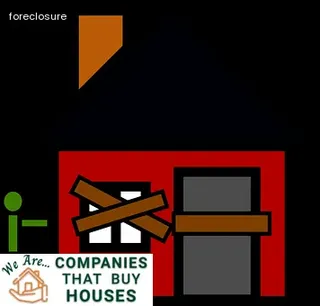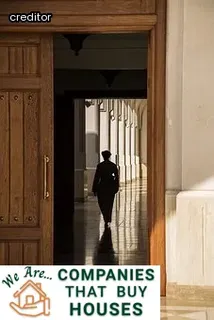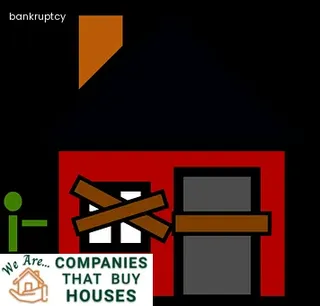South Dakota has a specific set of foreclosure laws and processes that must be followed in order for the foreclosure process to be legally enforced. It is essential for individuals who are facing foreclosure to understand these laws and processes in order to properly navigate them.
South Dakota's foreclosure laws dictate when a lender can begin the process, the legal procedures they must follow, and the timeline in which they must follow those procedures. The state also requires lenders to provide borrowers with a notice of default that states the total amount owed and details the steps required to cure or reinstate the loan.
Additionally, lenders are required to provide borrowers with at least 30 days to cure or reinstate their loan prior to filing a foreclosure action. If a borrower is unable to pay their loan within that time period, then lenders may proceed with filing a foreclosure action after providing proper notification.
It is important for borrowers to consult an experienced attorney who understands South Dakota's foreclosure laws so they can make informed decisions about their rights and options before taking any action.

When it comes to avoiding foreclosure in South Dakota, there are preforeclosure solutions that can help. It is important to understand the steps involved in the foreclosure process and take action as soon as possible to keep your home.
Working with a housing counselor, understanding the different options available, and communicating with your lender about a potential repayment plan or loan modification are all possible solutions for those facing foreclosure in South Dakota. Knowing when to take advantage of government programs such as forbearance or loan forgiveness can also be beneficial.
Additionally, reaching out to a lawyer or filing for bankruptcy may be necessary if other options are not available. Taking an active role in finding a solution is key, and seeking professional advice can help guide you through the process of navigating South Dakota’s foreclosure laws and regulations.
Homeowners facing foreclosure in South Dakota have certain rights that must be respected throughout the process. These include the right to receive notice of the foreclosure action, access to a court hearing, and the ability to dispute any inaccuracies or mistakes made by the lender.
Homeowners are also entitled to an explanation of all their options, including loan modification and short sale. In addition, they can request a postponement of proceedings while they explore those options.
Lastly, when foreclosure is unavoidable, homeowners still have the right to receive an accounting of all fees and costs associated with the foreclosure so they can understand their financial obligations.

Navigating foreclosure in South Dakota can be a difficult process, and it is important to understand the local deficiency judgment laws before taking action. A deficiency judgment is an order from a court that holds a borrower liable for any remaining mortgage debt after their property has been foreclosed upon.
South Dakota law allows lenders to pursue these judgments if the lender chooses to do so. In some cases, the amount owed may exceed the value of the property, which means that borrowers must be prepared to pay this additional amount.
It is also important to note that lenders have up to ten years to file suit against borrowers for any unpaid debt. Those facing foreclosure should consider discussing their options with an attorney who specializes in real estate law.
Understanding South Dakota's deficiency judgment laws can help those facing foreclosure make informed decisions about their situation and potential outcomes.
When facing a possible foreclosure in South Dakota, it is important to consider seeking professional assistance. An experienced attorney can provide valuable guidance and advice on how best to navigate the complex foreclosure process.
When researching potential legal help, try to find someone who has experience in South Dakota foreclosure law and can explain the range of options available for stopping or delaying the foreclosure process. Working with a knowledgeable attorney may be the best way to ensure that all available legal remedies are utilized and explored prior to taking any action that could affect one’s home.
Furthermore, an attorney can provide sound advice on debt consolidation, loan modification, repayment plans, short sale options, or bankruptcy proceedings which may result in greater success when attempting to stop a foreclosure. Keep in mind that while an attorney may be able to provide useful advice and solutions for avoiding foreclosure, hiring legal counsel is ultimately up to the individual’s discretion based upon their own financial situation.

When mortgage payments are missed, the homeowner is at risk of entering the foreclosure process. The lender will typically send a notice to the homeowner informing them of their default on the loan and what steps need to be taken in order to avoid foreclosure.
Depending on the state, there may be a grace period that allows for payment before any further action can be taken. In South Dakota, lenders must provide homeowners with a 90-day notice of intent to foreclose and inform them of their right to reinstate the loan before any foreclosure proceedings begin.
During this period, it is important that borrowers take action as quickly as possible in order to become current on their mortgage payments or negotiate with their lender regarding a potential modification or forbearance agreement. If no action is taken during this period, then the foreclosure process will continue, ultimately resulting in repossession of the home if not resolved.
When navigating the South Dakota foreclosure process, it is important to understand breach letters and how to respond. Breach letters are issued by lenders when a borrower has not paid their mortgage payments.
The letter will state all of the amounts that are overdue and any penalties or late fees that have been applied. It will also provide a timeline for repayment and may contain a notice of default.
Depending on the situation, borrowers may be able to renegotiate their loan terms with the lender or request an extension in order to bring the account current. If this is not possible, they should consider working with an attorney to explore other options such as filing for bankruptcy or short sale of the property.
The response to a breach letter must be made within the time frame specified in order for it to be considered valid and accepted by the lender.

Navigating the South Dakota foreclosure process can be daunting and it is important to know what to expect when taking action. The timeline of a foreclosure can vary greatly depending on the type of loan, but the process typically begins when a homeowner falls behind on mortgage payments for three consecutive months.
When this happens, the lender is required by state law to send a notice of default to the homeowner. This document outlines how many payments are past due, as well as any other fees associated with the foreclosure process.
After this notice is sent, the homeowner has 30 days to pay back all missed payments plus any additional fees before proceeding with foreclosure proceedings. If payment isn’t received within that time frame, then the lender may take further legal action and begin issuing notices to sell or auction off the property in order to recover their losses.
It is essential to understand these timelines if you are considering taking action during a South Dakota foreclosure process.
In South Dakota, homeowners who are at risk of foreclosure have the right to reinstate their mortgage before the sale of their home. This means that they can make a payment to bring their account current, but must do so within a certain timeframe given by law.
In order to reinstate the mortgage, the homeowner must pay all past due payments, court costs, attorney fees and other costs related to the foreclosure. It is important for homeowners facing foreclosure in South Dakota to be aware of this option as it can help them keep their homes and avoid further complications.
The most important step is to act quickly; if a homeowner misses the deadline for reinstatement, they may no longer have the opportunity later on. Therefore, it is essential for those facing foreclosure to know their rights and deadlines under state law in order to make an informed decision about how best to proceed with their situation.

The redemption period after a South Dakota foreclosure sale is an important part of the foreclosure process that homeowners must be aware of. During the redemption period, which typically lasts six months, the homeowner has the right to reclaim their property by paying off all outstanding loans, fees and interest.
In order to do this, they must contact the court and provide proof of payment within the allotted time frame. If they do not, then they lose all rights to their property and it will be sold at auction.
It is important for any homeowner considering taking action in a South Dakota foreclosure situation to understand their rights during this period as well as any other steps necessary to redeem their property. Knowing what options are available can ensure that homeowners have a better chance of keeping their home if they are able to make full payment for it during this time.
When it comes to navigating the foreclosure process in South Dakota, it is important to understand the strategies that can be used to delay or prevent a foreclosure sale. One of the most effective ways to do this is to work out an agreement with your lender.
This can involve changing the repayment terms of your loan, such as reducing your monthly payment amount or extending the repayment period. Another option is known as forbearance, which involves temporarily reducing or suspending mortgage payments for a certain period of time.
Refinancing is also an option and can help you lower your interest rate and/or extend the loan term. Additionally, you may be able to receive assistance from state programs or nonprofit organizations that offer housing counseling services.
Finally, filing for bankruptcy protection could help delay a foreclosure sale if done correctly and timely. It is important to note that each of these strategies has its own pros and cons so it is best to consult with an experienced real estate attorney before taking any action.

When homeowners receive notification that they may be facing foreclosure, it is important to take immediate action. Taking the time to understand and navigate the South Dakota foreclosure process can help homeowners protect their rights and assets during this difficult situation.
Homeowners should begin by collecting all relevant documents such as loan statements, notices from lenders, and financial records. Reviewing this information can help to understand what kind of assistance might be available, as well as any deadlines that need to be met.
Additionally, homeowners should explore their options for assistance including counseling services, loan modifications or refinancing opportunities. Finally, it is important to contact a qualified attorney who is knowledgeable about the South Dakota foreclosure laws in order to ensure the best outcome possible for the homeowner.
Understanding the foreclosure process and taking proactive steps can help protect homeowners from losing property or facing other financial hardships due to foreclosure proceedings in South Dakota.
Navigating the South Dakota foreclosure process is a complex undertaking, so understanding available loan modifications and mortgage refinancing options is essential for avoiding foreclosure. SD homeowners can take advantage of loan modification programs which allow them to negotiate with their lender to modify the terms of their current mortgage in order to make payments more affordable.
Mortgage refinancing is another option available to homeowners in SD and involves replacing an existing loan with a new one that carries different terms and conditions. Refinancing can help borrowers lower their monthly payments or access cash to pay off debts and avoid foreclosure.
Homeowners should discuss all available options with a qualified financial advisor or loan officer before deciding whether to proceed with a loan modification or refinance their mortgage.

It is important to educate yourself on the process of navigating a foreclosure in South Dakota before signing an Agreed Judgment. There are numerous legal considerations that must be taken into account prior to taking action.
As a homeowner, you should understand the differences between voluntary and involuntary foreclosures as well as what constitutes a deficiency judgment. Additionally, it is essential to know your rights under South Dakota’s Deed of Trust Act and how the foreclosure process works within the state’s statutory timeline.
Furthermore, there may be certain exemptions or defenses available to you during a foreclosure that can potentially prevent a complete loss of your home. Before signing an Agreed Judgment, research all of these important aspects in order to prepare yourself for any potential pitfalls that may arise throughout the proceedings.
When a homeowner finds themselves in default on their mortgage loan in South Dakota, they should take the time to review the loss mitigation options available from their lender. Loss mitigation is essentially an agreement between the lender and borrower that can provide relief on repayment of the loan.
These options may include loan modifications, forbearance agreements, repayment plans, or deed-in-lieu of foreclosure. It’s important to be aware that lenders are not obligated to offer these options and have discretion when presenting them.
Therefore, it’s very important for homeowners in default to understand their financial situation and be able to communicate it effectively with their lender. Depending on the lender’s criteria and your qualifications, you may qualify for one of the aforementioned loss mitigation options that could help you avoid foreclosure altogether or significantly reduce the amount owed.

When navigating the South Dakota foreclosure process, homeowners need to understand the difference between judicial and non-judicial foreclosures, as well as the rights they are provided under state vs federal law.
Knowing what protections are available to protect personal property assets during a foreclosure is key – understanding when exemptions from creditors’ reach applies is also important, as is being aware of how mortgage acceleration can affect a homeowner’s loan balance.
Comparing and contrasting these various aspects of a South Dakota foreclosure can help homeowners make the best decision about what action to take in their particular situation.
In South Dakota, a foreclosure is a legal procedure designed to help lenders reclaim property from a borrower who has failed to make contractual payments. When a homeowner falls behind on their mortgage payments, the lender may file a lawsuit that results in a court ordering the sale of the mortgaged property.
The proceeds from this sale are used to repay the loan balance and any legal fees or other costs associated with the foreclosure process. In order for a foreclosure to occur in South Dakota, all past-due payments must be paid as well as any attorney’s fees, court costs, and other expenses incurred by the lender.
Additionally, all liens on the property must be satisfied before it can be sold at auction. Once these conditions have been met, a Notice of Sale will be published in local newspapers as well as posted on the courthouse door and delivered to all parties involved in the foreclosure process.
The notice will include details such as date and time of sale and location where bids will be accepted. It is important for potential buyers to understand that if they purchase at auction they are assuming all obligations associated with the mortgage including taxes, insurance and other costs associated with maintaining ownership of the property.

The redemption period for foreclosure in South Dakota is one of the most important aspects to consider when navigating the process. It gives homeowners the opportunity to reclaim their property after it has been sold at a foreclosure sale, provided they pay the full amount of what was owed on the mortgage plus interest and costs.
The redemption period begins from the date of sale and ends six months later. This time frame can be extended under certain circumstances if both parties agree.
Knowing this information ahead of time can help homeowners prepare for this critical step in navigating the South Dakota foreclosure process.
In South Dakota, a homeowner may go into foreclosure if they are three months behind on their mortgage payments. This is the amount of time homeowners have to make up delinquent mortgage payments before facing foreclosure from their lender.
If a home is in default for more than three months, the lender can then begin proceedings to foreclose on the property and force the homeowner out. It's important for those facing financial hardship to understand the foreclosure process and how long they have to bring their mortgage current before going into foreclosure.
Knowing this information can help homeowners take action and seek assistance before it's too late.
South Dakota has the longest average foreclosure process in the nation. According to research from RealtyTrac, South Dakota’s foreclosure timeline averages 1,244 days—more than three and a half years.
That’s several times longer than the second-longest state on the list, Louisiana, which has an average of 885 days from start to finish. Knowing how lengthy the process is just one of many factors to consider when navigating South Dakota's foreclosure process.
Homeowners should also be aware of potential options available prior to initiating a foreclosure action and have a plan in place for what steps they need to take in order to protect their rights and interests throughout the process. With proper preparation, homeowners can navigate South Dakota’s lengthy foreclosure process successfully.
A: The foreclosure process in South Dakota typically takes 4 to 6 months, from pre-foreclosure to the foreclosure auction and finally to the mortgage lender's repossession of the property. Legal involvement, such as lawyers and court proceedings, can extend this timeline.
A: The timeline of a foreclosure in South Dakota can vary depending on how quickly the homeowner responds to the lender's requests, but generally it takes between 3-9 months until repossession of the property occurs.
A: The timeline for a foreclosure in South Dakota varies depending on the particular circumstances surrounding the situation. Generally, the process may take anywhere from three months to a year or longer, depending on whether arrears or other financial obligations must be addressed through payment plans, short selling, or deficiency judgments.
A: The length of time for a Chapter 7 Bankruptcy foreclosure in South Dakota varies, but usually takes between 90 to 120 days from pre-foreclosure to the mortgage lender's repossession of the property.